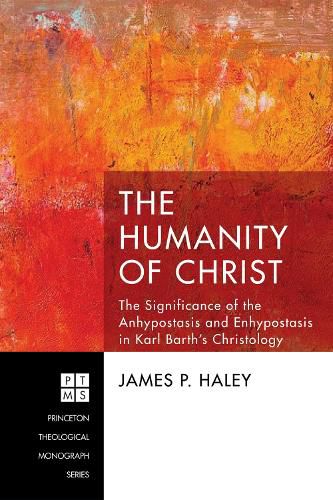Readings Newsletter
Become a Readings Member to make your shopping experience even easier.
Sign in or sign up for free!
You’re not far away from qualifying for FREE standard shipping within Australia
You’ve qualified for FREE standard shipping within Australia
The cart is loading…






This title is printed to order. This book may have been self-published. If so, we cannot guarantee the quality of the content. In the main most books will have gone through the editing process however some may not. We therefore suggest that you be aware of this before ordering this book. If in doubt check either the author or publisher’s details as we are unable to accept any returns unless they are faulty. Please contact us if you have any questions.
This work is a critical analysis of Karl Barth’s unique adoption of the concepts anhypostasis and enhypostasis to explain Christ’s human nature in union with the Logos, which becomes the ontological foundation that Barth uses to explain Jesus Christ as very God and very man. The significance of these concepts in Barth’s Christology first emerges in the Gottingen Dogmatics and is then more fully developed throughout the Church Dogmatics. Barth’s unique coupling together of anhypostasis and enhypostasis provides the ontological grounding, flexibility, and precision that so uniquely characterizes his Christology. As such, Barth expresses the Word became flesh as the revelation of God that flows out of the coalescence of Christ’s human nature with his divine nature as the mediation of reconciliation. This ontological dynamic provides the impetus for Barth’s critique of Chalcedon’s static definition of the union of divine and human natures in Christ from which Barth transitions to an active definition of these two natures. Not only does anhypostasis and enhypostasis explain the dynamic union between the divine and human natures in Christ, but also the dynamic union between Jesus Christ and his Church, which reaches its apex in the reconciliation of humanity with God, in Christ. The ontological foundation of anhypostasis and enhypostasis in Christ’s union with his Church explains the importance of the royal man in understanding genuine human nature, the exaltation of human nature, and the sanctification of human nature.
$9.00 standard shipping within Australia
FREE standard shipping within Australia for orders over $100.00
Express & International shipping calculated at checkout
This title is printed to order. This book may have been self-published. If so, we cannot guarantee the quality of the content. In the main most books will have gone through the editing process however some may not. We therefore suggest that you be aware of this before ordering this book. If in doubt check either the author or publisher’s details as we are unable to accept any returns unless they are faulty. Please contact us if you have any questions.
This work is a critical analysis of Karl Barth’s unique adoption of the concepts anhypostasis and enhypostasis to explain Christ’s human nature in union with the Logos, which becomes the ontological foundation that Barth uses to explain Jesus Christ as very God and very man. The significance of these concepts in Barth’s Christology first emerges in the Gottingen Dogmatics and is then more fully developed throughout the Church Dogmatics. Barth’s unique coupling together of anhypostasis and enhypostasis provides the ontological grounding, flexibility, and precision that so uniquely characterizes his Christology. As such, Barth expresses the Word became flesh as the revelation of God that flows out of the coalescence of Christ’s human nature with his divine nature as the mediation of reconciliation. This ontological dynamic provides the impetus for Barth’s critique of Chalcedon’s static definition of the union of divine and human natures in Christ from which Barth transitions to an active definition of these two natures. Not only does anhypostasis and enhypostasis explain the dynamic union between the divine and human natures in Christ, but also the dynamic union between Jesus Christ and his Church, which reaches its apex in the reconciliation of humanity with God, in Christ. The ontological foundation of anhypostasis and enhypostasis in Christ’s union with his Church explains the importance of the royal man in understanding genuine human nature, the exaltation of human nature, and the sanctification of human nature.